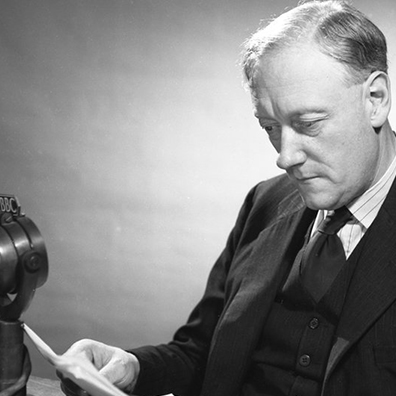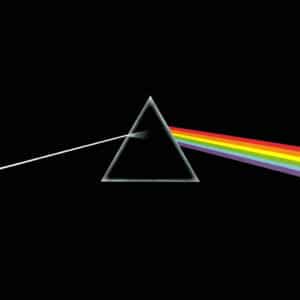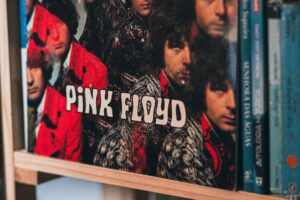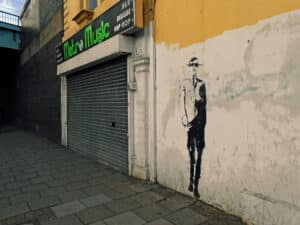
Jim Morrison and The Doors – The Lizard King lives on!
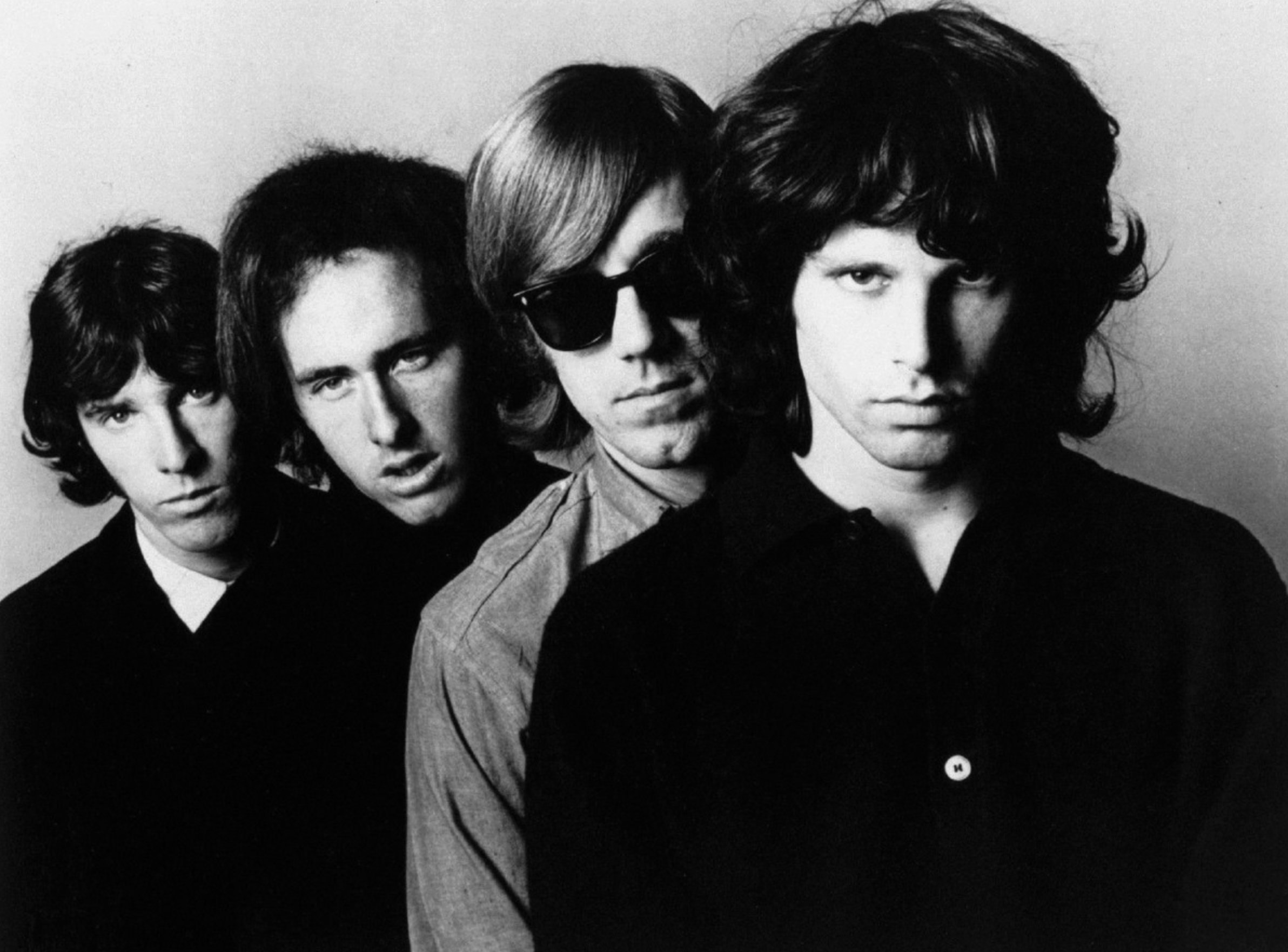
Historians quip that at least 50 years must pass before one can write an accurate history of an era. History, of course, is made difficult if first-hand witnesses have died, if memories have started to blur, or if primary source documents are missing. On the other hand, the passage of time allows heated and blurred emotions to settle, obscure documents to be found, and it affords the historian the wisdom in recognizing what has, and has not, become significant.
Only now, for example, can we really determine what the Watergate scandal from the early 1970s did to United States politics. Even more distant events are still open to interpretation. I recently read a book, for example, by a famous historian who argues that it was actually Russia’s attack against the Japanese in China during August 1945, and not necessarily the dropping of two atomic bombs by the United States, that finally ended world-war two in the Pacific. Perhaps even the past is not yet past!
Fortunately, history can be fun. Now, 50 years after the untimely death of the singer and poet Jim Morrison, I am witnessing younger generations rightfully hailing him, and his musical quartet the Doors, both for their artistry and also for their influence on succeeding generations of musicians, performers, and lyricists
Sure, the Doors were inducted into the Rock and Roll Hall of Fame back in the early 1990s, but that was a long time ago. The true measure of the Doors’ legacy is not a small plaque in the Hall, but rather that newer fans are downloading and enjoying Doors’ songs.
Perhaps part of the reason why younger generations appreciate the Doors is that modern auto-tuned and computer enhanced music can often be unfulfilling—sort of like eating cotton candy and expecting a good meal. Instead, modern listeners want to mix up their sonic diet with something meaty and real and not many contemporary groups can provide the kind of musical nutrition offered by the Doors.
In the 1960s the older people, basically anyone over 30, were considered “square” and “out of touch,” while the young generation sought “authenticity” in all aspects of life—their thoughts, emotions, actions and music. Granted, the definition of “authentic” was not always clear, but it was nevertheless what they claimed they wanted.
One thing that was not in doubt however, was that listeners found something special in the Doors—in their music, their stage performances, and in the tragic early death of their lead singer Jim Morrison. Nevertheless, questions remained. Although the group left an impressive catalog of work, one can’t help but wonder what Jim and his fellow artists might have still accomplished. More music? More poetry? Theatrical stage productions? Sadly, while those questions will forever remain unanswered, we shouldn’t let them diminish our enjoyment of what the Doors gave to the world of music.
Who were The Doors?
The Doors were composed of lead singer Jim Morrison, keyboardist Ray Manzarek, guitarist Robby Krieger, and percussionist John Densmore. As in all stories of musical success, they were exquisitely musically gifted individuals who, in Los Angeles in 1965 came together at the right time, in the right place, and with the creative flair to give audiences a new sound and a new concert experience.
Manzarek, Krieger, and Densmore built a platform of jazz, blues, and rock upon which Jim Morrison could overlay his lyrics. These lyrics were, in turn, part narrative, part mysticism, part poetry, part primal scream, and part hypnotism. The “Lizard King,” as fans liked to call Morrison, was an American original in thought, word, and deed—an exemplar for the charismatic lead men who would follow—from Robert Plant of Led Zeppelin to Freddy Mercury of Queen to Curt Cobain of Nirvana to Iggy Pop and many others.
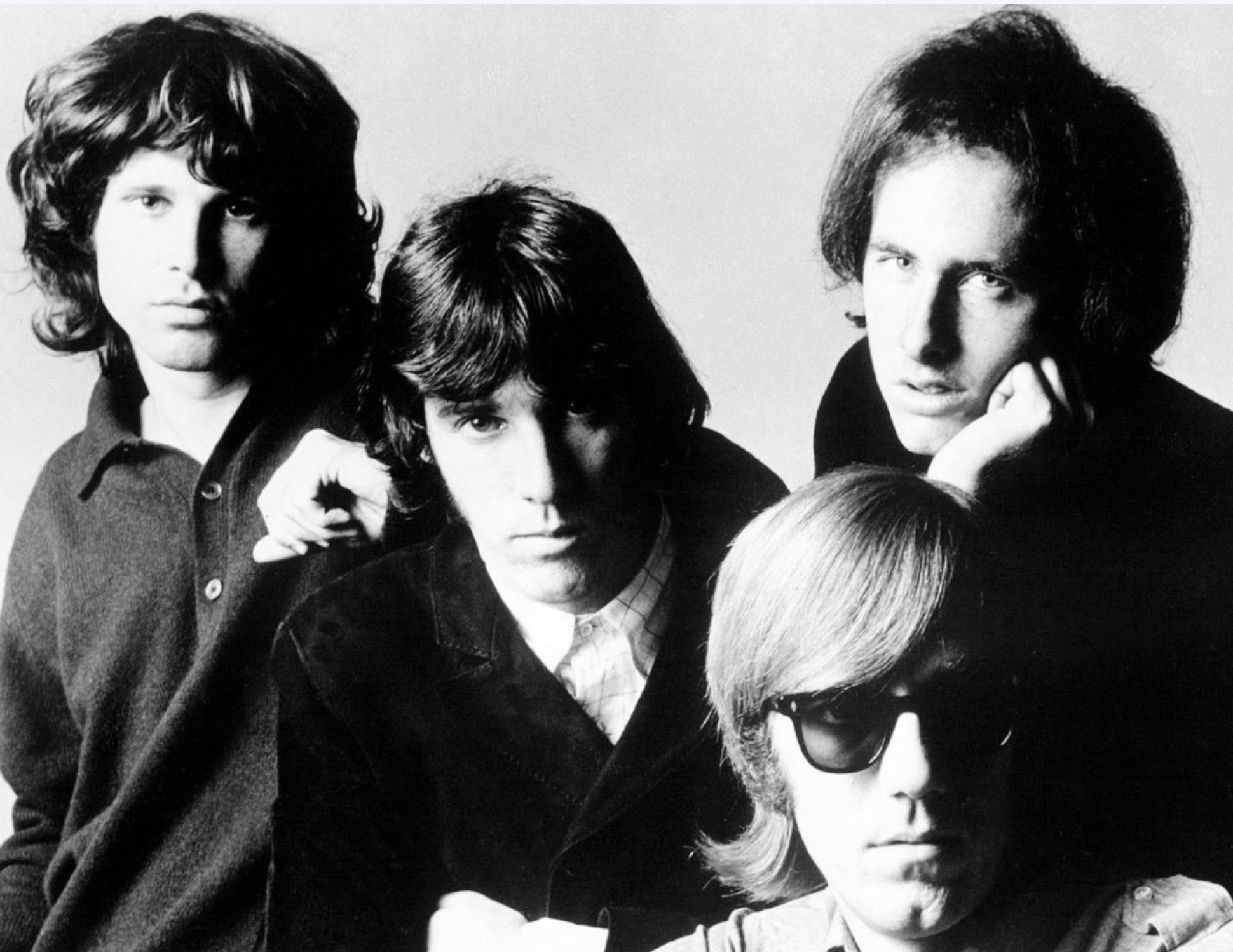
The Doors
Morrison’s early years
Jim Morrison was born in 1943 to an ambitious and rapidly advancing U.S. Naval Officer and pilot. Moving frequently during his youth, Morrison displayed a keen and high intellect even though his grades were never that remarkable. He read constantly and while still in high school he was already tucking into some very serious literature: The writings of the German philosopher Friedrich Nietzsche, the musings of French poet Charles Baudelaire, and the prose of the chaotic and free-spirited French surrealist Arthur Rimbaud.
Now I have to confess, dear reader, that when I was in highschool I did not even know who these writers and philosophers were, but perhaps that’s just me for I was certainly not Jim Morrison—someone who categorically refused to conform to anyone’s idea of who he should be, what he should do, or how he should think.
Yet Morrison was not simply flipping pages in an attempt to impress people. He was genuinely interested in the philosophical aspects of life and he kept journals of his own thoughts and ideas—even including dark and mystical ones that, these days, many of us might find rather uncomfortable in someone that young.
Disdaining any and all forms of authority, he wished to take every aspect of life to its absolute, and sometimes dangerous, extreme. While young modern-day fans of Jim Morrison practically worship his unconstrained attitude toward life, witnesses such as his friends and bandmates could find this unpredictability taxing—especially when it was amplified by excessive alcohol.
Yet Jim Morrison had a magnetism about him that others found mesmerizing. He, as they say, had “it.” Most of the time he was shy, unassuming, and lyrical in his thinking and speaking. But as his fame grew, women wanted him and men wanted to be him—a 1960s version of stardom’s story that is as old as time itself.
After graduating from high school in Alexandria, Virginia, Morrison attended a year of college at Florida State University but ended up hitchhiking to California where, in 1965, he earned a film degree from UCLA. Of course, just as in high school, he did not attend the graduation ceremony—Jim Morrison felt himself to be above such constructs of societal organization.
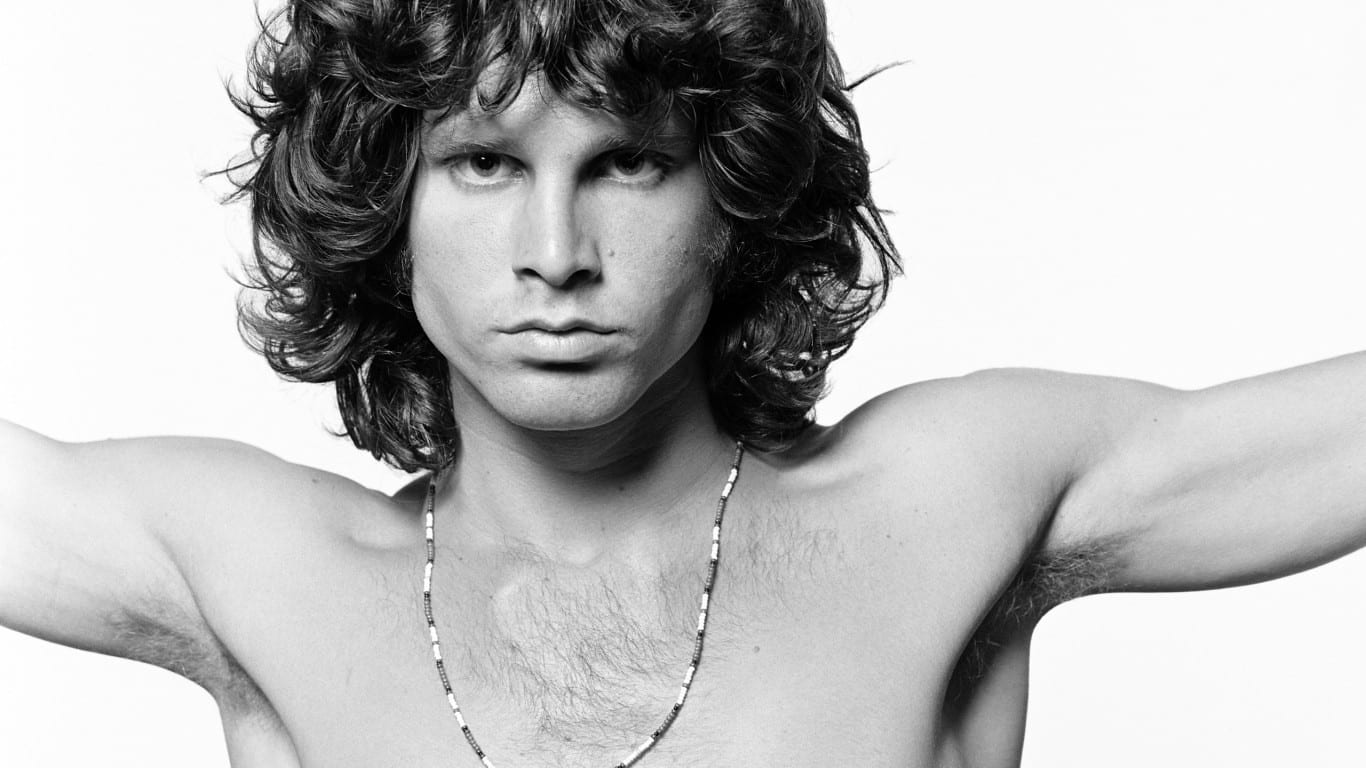
The Young Lion
also known as Jim Morrison
Morrison had intended to go to NYC to pursue working in film but, in one of the pivotal moments in music history, he instead lived for a few months, very much like a homeless person, in an abandoned building near Venice Beach.
The formation of The Doors
Morrison had intended to go to NYC to pursue working in film but, in one of the pivotal moments in music history, he instead lived for a few months, very much like a homeless person, in an abandoned building near Venice Beach. He dropped a lot of LSD (which was still legal until 1968 in the United States), became very lean as he lost weight, let his hair grow, and wrote prolifically. When he emerged, looking like a Greek god, his notebooks were full of poems, lyrics, and free-form thoughts.
One day, while walking on the beach, he ran into a fellow UCLA film student by the name of Ray Manzarek. Ray, who had classical conservatory training from his early life in Chicago, was already a skilled keyboard player. Now, in 1965, as he was earning his Masters, he was playing in gigs with his brothers. As with most gigging musicians, they played a wide range of songs, but they were however, to put it mildly, not an ensemble that was on the path to musical success.
When Ray saw the lyrics that Jim had produced, he was immediately struck by their emotion and poetry. These words were not the usual pop pablum of the day: “She loves me. I love her. We are as happy as we can be.” Legend has it that Ray thought for a minute and proposed that he and Jim should form a band and “make a million dollars!” While this aspect of the story is probably an exaggeration, Ray’s interest was genuine and he invited Jim to join him in exploring the idea of putting music behind the lyrics.
There was one small problem however…Jim Morrison had never sung before. He might have had great lyrical ideas, but he did not yet know how to give them a voice and melody.
Fortunately, Ray Manzarek, four years older than Jim, recognized a diamond in the rough and patiently taught him the basics of singing. While it started slowly, progress was steady—even when Jim would often just speak his words while Ray accompanied him on the keys. In fact, Jim was so shy about singing, that when the group started to appear on stage it was some time before he would even turn to face the audience instead of having his back to them.
Ray had met Robby Krieger, just 19 years old, at a Transcendental Meditation lecture in Los Angeles given by the Maharishi Mahesh Yogi—the very person, by the way, who later played a role in the 1968 Beatles visit to Rishikesh, India. Robby might have come from a comfortable middle-class family, but his musical interests were anything but plain vanilla. He hedged an interest in Jazz, Flamenco guitar, and even absorbed Ravi Shankar’s In London sitar brilliance at a time when most West Coast musicians were not at all familiar with Indian sounds.
Robby, in turn, knew John Densmore. Although just 21, Densmore was already a solid drummer. Most importantly however, he had an innate musical/rhythmic feel of how to work with Jim Morrison’s lyrics. John wasn’t just putting down a beat, but instead was conversing with his bandmates in an ongoing musical “discussion”—very much a jazz skill but one that paid great dividends in the rock/blues admixture of the Doors.
Recognizing their shared interests, the quartet put to work writing and rehearsing songs. They made a half-hearted attempt to find a bass player, but Ray decided that he could get the sound he wanted by adding a piano bass to his keyboard setup and play the bass part with his left hand, while working the melodies with his right on the regular set of keys.
They derived the name Doors from the 1954 book The Doors of Perception by Aldous Huxley who, in turn, borrowed the phrase from the 18th century English poet William Blake’s remark about the doors of perception…again, that intellectual side to the Doors.
Their start was a slow grind. They played, for five dollars a night and sometimes to an empty house, at an L.A. dive bar called The London Fog. Although it was indeed a dump, in retrospect it was the perfect laboratory in which they could beaver away at discovering what worked. In many ways, the Fog was their equivalent of the Beatles time in Hamburg, Germany. It was where they paid their dues and built the foundation that would that would make them a success.
Eventually they landed a gig at the famous Whiskey a Go Go on the Sunset Strip. This was a big step up as here they earned musician’s union wages (so they could actually survive) and had the opportunity to play in front of a genuinely engaged and interested audience. The word soon spread that there was a hot new band in town with a singer that one just had to see to believe. A record deal with Electra followed not long after and it all started to fall into place.
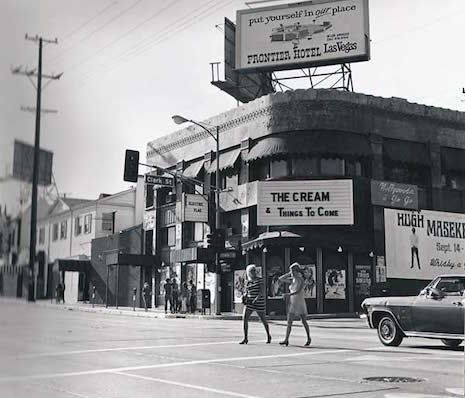
As pictured here before:
the famous Whiskey a Go Go–almost every rock artist worth their salt has been here.
The start of six gold albums
Many remember 1967 as being the year that the Beatles released Sgt. Pepper’s Lonely Heart’s Club Band, but it was also, in January of that year, when the Doors released their first album, simply named The Doors. Electra records launched it with a novel idea that has now become a staple of music industry publicity: A full size billboard on Sunset Blvd with a picture of the four musicians.
It is hard not to drift into hyperbole when describing the quality of this album: Phenomenal, a stunning sonic achievement, a classic from the start. It is filled with songs that have gone down in rock music legend. From Light My Fire, to Break On Through, to The Crystal Ship, to The End, it is an album that has aged very well and was the start of a remarkable run: From 1967 to early 1971 the band would release six gold records (at least one million sold). This is a record, no pun intended, that even the best of ensembles would drool with envy to have.
Concerts and controversy
With the success of their first album and Light My Fire hitting #1 on the singles charts, the Doors were fully in their stride as they matched their studio work with touring. Those who were fortunate enough to have seen the Doors in concert attest that, when Morrison was at his best, the Doors were truly an outstanding live act.
Jim Morrison, who claimed that the soul of a Native American had passed into his body as a young boy, was an on-stage mystic, shaman, poet, and singer rolled into one. Audiences had never seen anything quite like it. Often the band didn’t even have a set list and would play whatever fit the moment. Neither the audience nor the band were ever quite sure where things were headed.
Yet problems never seemed to be too far away for the Lizard King. He was arrested on stage in New Haven, Connecticut after getting into an altercation with the police. He was arrested again in Las Vegas and bailed out of jail just in time. Reports have it that he was badly taunting the police by calling them monkeys, pigs, and other choice terms. One of the policemen vowed that as soon as he was off-duty he was going to take matters into his own hands…not a threat I would want to have tested in the Las Vegas of the late sixties. Then, of course, there was the infamous Miami concert in 1969 in which he was charged, brought to trial, and sentenced to six months of prison for indecent exposure.
Looking back at the reports, biographies, and first-person accounts by the other band members, the Miami arrest appears to have been a political statement by ambitious authorities, for it was only days after the concert that charges were leveled against him. The trial, while not a complete farce, in retrospect very much failed to prove indecent exposure even if the jury did find him guilty.
While Morrison’s very drunken speech and demeanor at the concert was indeed vulgar, his behavior by today’s standards seems almost innocent in comparison to the crotch-grabbing antics that would follow in the years to come by musicians such as Michael Jackson, Aerosmith’s Steven Tyler, and many others who made this act part and parcel of their stage performances. I hardly need mention that these days an artist feels almost obligated to say anything they wish, at any time, to anyone. These days, in the ranks of provocateurs, Jim Morrison would be far down on the list.
Either way, the eighteen months that the legal drama played out, coupled with Jim’s serious drinking, proved to be a heavy drag on him emotionally and physically. The master of escaping consequences for his behavior was not quite as Houdini like as he had been in previous years. At least once Ray Manzarek had to talk him out of leaving the band. The Young Lion of 1967/68 was becoming more like a lion in winter…
Jim Morrison was getting burned out and he was desperately in need of counseling for his drinking—getting drunk and playing the matador with speeding cars on the Sunset Strip and hanging from ledges might sound cool to many young people, but passing out in the studio and urinating in one’s trousers is, in one’s mid-twenties, a sign that help is needed. Unfortunately, as we know today, direct interventions have mixed results and in the case of the famous Lizard King, while his bandmates would have helped, reaching a rock star is particularly hard as there are always enablers at every turn wanting to have a drink.
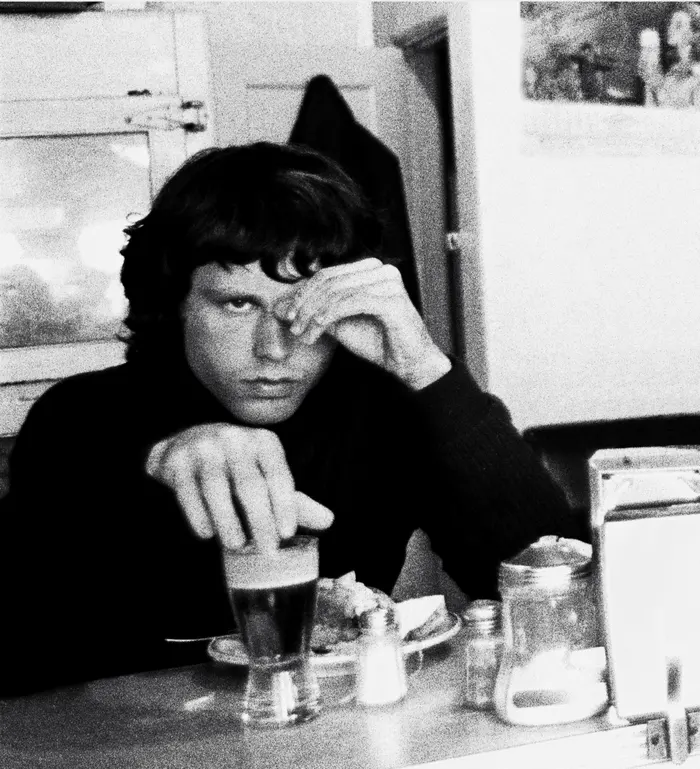
Beer for breakfast–
pretty normal for Morrison
The last album
Yet the Doors were not quite finished. In late 1970 they gathered again to record the album L.A. Woman—a collection considered among their best. Along with Love Her Madly were two classics: L.A. Woman and Riders on the Storm. It was released in April 1971 to commercial and critical success.
By this time Jim Morrison had decamped to Paris to take the break he had long needed. Three months later, he was found dead in the bathtub of his apartment. Since there was no autopsy, we will never know the true cause of his death and the Paris officials simply listed it as heart failure. He was just 27 years old. Three years later, his long-time girlfriend, Pamela Courson, died in Los Angeles of a heroin overdose. She was also just 27. Jim Morrison never served his prison sentence as his appeal was never heard. In December 2010 the Florida governor issued a posthumous pardon.
What to listen to
Fortunately for listeners, Jim Morrison and the Doors left behind a lot of very good music for us to enjoy. Unlike all too many “best of” albums, the Very Best of the Doors actually is an outstanding collection from start to finish.
Below I list five suggestions to get a feel for the Doors as a blues-rock band. To really hear and get the feel of these songs I recommend a good pair of headphones, speakers, or high-quality ear-buds. There is no modern electronic trickery on these recordings. You feel as if you are in the studio with the band. Enjoy that breath of fresh air!
- The Crystal Ship – This was the B side of Light My Fire from their first album. It gives you the feel of the pacing that Morrison’s poetic side added to a song. Very relaxed with no rush at all.
- Peace Frog – An exciting up-tempo description of events such as Morrison’s arrest in New Haven to the violent altercations in the streets of Chicago surrounding the 1968 Democratic Convention.
- Riders on the Storm – A magnificent display of Ray Manzarek’s classical prowess on the keyboards while Morrison seems to be channeling the German philosopher Martin Heidegger with his lyric of being “thrown” into the world.
- L.A. Woman – Arguably the best driving song of all time—particularly for those who can remember when we used to drive with the radio on and the windows rolled down. John Densmore keeps an incredible beat throughout the eight minutes of the song. Great lyrics. Crank it up and take a drive with this one.
- The End – Unfortunately this song will always be associated with the movie Apocalypse Now. I say unfortunately as this recording is a masterpiece in its own right. The first few stanzas, like no other Doors song, reveal Jim Morrison’s ear for poetic meter. Listen carefully to how he brilliantly stresses the word “again” after the phrase “I will never see you” and the sentence ending in “distant land.” One immediately notices the influence of Ravi Shankar’s sitar albums on Robby Krieger’s guitar playing as he sets up an Indian raga and drone sound. John Dunsmore’s drumming is perhaps the most musical percussion work I have ever heard outside of a pure jazz album. A word of caution however. The second half is Morrison’s re-description of the famous Greek narrative of Oedipus Rex and the language at the end is a bit salty. Either way this was recorded in late 1966 and it still towers above the landscape as a musical and lyrical masterpiece. A shorter version can be found here: The End (shorter version)
Conclusion
Lots of young listeners drop comments on the internet that Jim Morrison was the greatest English language poet of the 20th century. I think this is over egging things a bit, as T.S. Eliot, W.H. Auden, and Maya Angelou are all strong contenders. We shouldn’t quibble over such details however, as the Doors were an outstanding quartet that brought a unique Los Angeles sound to American music. Yes, they could put out the basic pop song like Hello I Love You, but they incorporated deeper elements of lyricism, narration, blues/jazz, and theater. Now, at that magical 50-year, mark I would say history is treating them very well indeed!
A note or two
After Jim Morrison died, the Doors released three more albums. Other Voices in 1971, Full Circle in 1972, and American Prayer in 1978. It was hard, however, to soldier on as some individuals in life just can’t be replaced.
Twenty-seven is young by any standard, and is the age at which Jimi Hendrix, Janis Joplin, Jim Morrison, Amy Winehouse, Kurt Cobain, Brian Jones of the Rolling Stones, and Pete Hamm of Bad Company all died. This is grimly known as the “27 Club.”
They say you know you have arrived when the musical fun-man Weird Al Yankovic does a send up of you. Ray Manzarek played the keyboards on this and the backing band was superb. Al perfectly captures the Doors vibe. Downright fun: Craigslist
Jim Morrison is buried in the Pere la Chase cemetery in Paris. Fans say that it is the 4th most popular tourist sight in all of Paris.
Ray Manzarek died in 2013 of cancer.
As of the summer 2022, Robby Krieger and John Dunsmore are both still alive. You can check out their videos on YouTube. The both strike me as the type of guys you would like to sit next to on a long airplane flight.
All four Doors had introspective personalities so it is no surprise that the three surviving members wrote books in which they talk about Jim’s talents as well as their frustrations with his unpredictability. I gained the impression from reading Krieger and Dunsmore that it was well into the 21st century before they fully understood and came to peace with their relationship to Jim Morrison.
While Val Kilmer was great in the role as Jim Morrison in the 1991 movie, The Doors, the film had a great number of inaccuracies. It was quick to show the drunken side of Morrison, but failed to really plumb the creative depths that made him the totemic center of the Doors. Ray Manzarek who was, after all, there from the beginning, called it “Oliver Stone in leather pants.” Ouch!
I hope that there will be another Doors movie in our future. No doubt that Tom Hanks, now well into his 60s, would very much like to be in it. Perhaps since he was already in a movie (Greyhound) about the Navy he would angle for the role of Jim’s father Admiral Morrison…
Happy listening!
![]()

